Learn Access Now! Chapter 15 Next Section in Chapter 16 Chapter 17
Chapter 16: Ensuring Data Security
(This is section 1 of 7 in this chapter)
As you work with Access, over time you invest quite a bit into your databases. You develop forms, reports, and queries that allow you to manage your data just as you desire. These efforts take time. You validate your data and make sure that it is correct and that all redundancy is removed. These efforts take more time. In addition, the data itself takes time and money to acquire.
The result is that at some time you are going to realize that your data has value--real value--to your company. At some point you are going to be faced with the necessity of safeguarding your database. Fortunately, Access includes some security features you can use to heighten the security of your data. In this chapter, you learn how to use those features.
By the time you finish this chapter, you will understand the following key concepts:
- Different levels of security you can use in Access
- How to set a database password
- What it means to encrypt a database file
- How to configure user-level security
- How to work with accounts and permissions
- How to use the User-Level Security Wizard
Setting a Database Password
If your databases are used primarily in a single-user environment, then a good place to begin your security efforts is with a password for your database. By "single-user environment," I mean that your database is used by a single person at a time, not necessarily the same person. Thus you could work on it this morning, and a coworker could use it later in the afternoon, but you are not both using it at the same time.
If, instead, there are multiple users working with your data at the same time, then you will need more powerful and flexible security measures, as covered later in the chapter in the section on users and groups. If you are developing a single-user database, then you should apply the ideas in this section. You can always increase security measures at a later time.
Note: Password-protecting your database is also a good option if the database contains sensitive data. For instance, personnel pay records or your company's secret formulas.
Setting a password for your database is analogous to adding a deadbolt to the front door of your house. The purpose is to keep unauthorized people from entering the house. Once the deadbolt has been bypassed, however, the full contents of the house are open to the intruder.
It is the same way with a database password. The entire purpose of the password is to make it more difficult for someone to open your database. Once open, however, the data in the database is entirely open to the user. (Later in this chapter you will learn how you can actually encrypt your database, which is a much more secure method of protecting your data, instead of just protecting the front door.)
Because the database password opens all the data to a user, this means that the password is just as important as the key to the deadbolt on your house. You should not leave it lying about where others can see it and figure out what it is for. You should also be sure that you use a password that is at least moderately difficult for someone to guess.
Adding the Password
You can define a password for a database by first closing the database. Make sure you stay in Access, but close the database that you want protected. Then choose the Open option from the File menu. This displays the familiar Open dialog box, as shown in Figure 16-1.
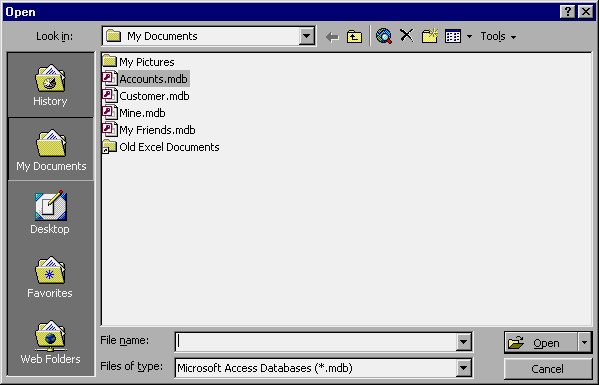
Figure 16-1 Picking a database to protect.
You should use the controls in the dialog box to select the file you want to protect. Simply click your mouse on the file so it is selected or the name appears in the File Name box; do not actually open it yet. Then click your mouse on the down-arrow to the right of the Open button. This displays a menu of four different ways you can open the database file you have specified.
Select the Open Exclusive option. Access opens the database, as directed. So far, however, there is nothing different about the database. You can work with it as you would any Access database. You now need to inform Access of the password you want to use. Do this by selecting the Security option from the Tools menu. This displays a submenu from which you should choose Set Database Password. Access displays the Set Database Password dialog box, as shown in Figure 16-2.
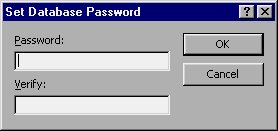
Figure 16-2 Specifying a password.
In the Password box, enter the password you want to use. Pay particular attention to the way you type the password, as uppercase and lowercase are considered important. You will also need to enter the same password again in the Verify box. When you are ready to proceed, click your mouse on the OK button.
The password is now set. You can continue using the database as you normally would. When you are done working with the database, simply close it.
Using the Password
Once you have password-protected a database, that database cannot be opened unless you first supply the password. The password is stored with the database, so if you copy the database elsewhere or move it to a new location, the password is moved as well. When someone tries to open the database, Access displays the dialog box shown in Figure 16-3.
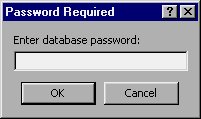
Figure 16-3 You must enter a password before opening a database.
At this point, simply enter the password. This should be entered exactly as when first defined. Thus, if you entered the password of "MyPassword", you should not try to use "mypassword." Upper- and lowercase is significant in your password. If you enter the wrong password, Access displays a dialog box warning, as shown in Figure 16-4. You can then click your mouse on OK and try to enter the password again.
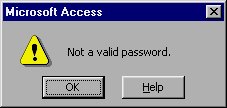
Figure 16-4 Access informs you if you use the wrong password.
Once you successfully enter your password, you can use the Access database as you normally would. If you close the database, you will again need to reenter the password before working with the database.
It is particularly important to realize that if you forget the password you assigned to a database, you simply won't be able to use the database. Microsoft provides no method or utility that will help you gain access to a database for which you don't know or have forgotten the password. This has important ramifications in a corporate environment where an employee could password-protect a database, and then leave the company or become unavailable after an accident. If others may eventually need access to a database, it is best to write down passwords and store them in a secure place.
Note: If you absolutely need access to a file for which the password has been lost, you may be able to find a third-party utility that will remove the password. Search the Internet for such utilities by using keywords such as "Access" and "password" and "removal."
Removing the Password
At some point you may wish to remove a password you assigned to a database. For instance, the data may no longer be considered sensitive, or you may want to remove the password and reassign a new one. To remove a password, you need to open the database for exclusive access. Close the database, and then choose Open from the File menu. This displays the Open dialog box, as shown earlier in Figure 16-1. Select the database whose password you want to remove, then click your mouse on the down-arrow to the right of the Open button. From the resulting menu, choose Open Exclusive.
At this point you are asked to enter the password for the database. Enter it as you normally would, and Access opens the database, as expected. Now all you need to do is choose Security from the Tools menu, and then choose Unset Database Password from the resulting submenu. Access displays the dialog box shown in Figure 16-5.
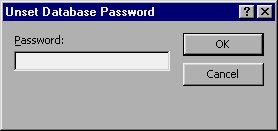
Figure 16-5 You need the password in order to remove the password.
Enter your password in the Password box, and click your mouse on the OK button. Access dismisses the dialog box, and your database is unprotected.
Note: Anyone who has the password for a database can remove that password. Thus, if you share a database password with a coworker, both you and the coworker can remove the password.
Learn Access Now! Chapter 15 Next Section in Chapter 16 Chapter 17